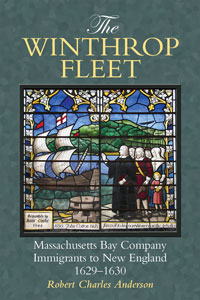 My “Devil’s advocate” pops up and waves red flags at me whenever something is not quite right based on “our” experience. Our most often used flag is for “black holes” – too much missing information. The connection may be right, but it certainly hasn’t yet been proved, and skipping over these holes is like skipping two out of every three nails when you build your deck – it might hold for a while, but it isn’t safe. Continue reading Missing nails and black holes
My “Devil’s advocate” pops up and waves red flags at me whenever something is not quite right based on “our” experience. Our most often used flag is for “black holes” – too much missing information. The connection may be right, but it certainly hasn’t yet been proved, and skipping over these holes is like skipping two out of every three nails when you build your deck – it might hold for a while, but it isn’t safe. Continue reading Missing nails and black holes
Category Archives: Family Stories
“Between the bark and the tree”: ‘The Winthrop Woman,’ 1629
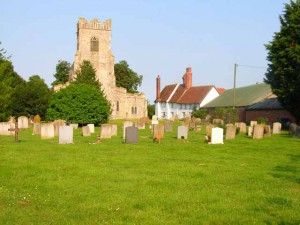
As I delve further into the Winthrop Papers, I am finding interesting asides about the relationships within the Winthrop family. Like his father, Governor John1 Winthrop (1588–1649) remained close to his “brothers” and “sisters,” such as Thomas Fones (d. 1629), the widower of Winthrop’s sister Anne, and Thomas’ second wife, Priscilla (Burgess) (Sherman) (Fones) Paynter, the future governor’s “verye louinge sister Mrs. Fones.” Continue reading “Between the bark and the tree”: ‘The Winthrop Woman,’ 1629
Organizing a family reunion: Part One
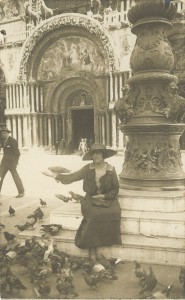
My mother used to say, wistfully, “You’re always writing about your father’s family; I wish you would write about mine.” Vita Brevis readers will remember the posts on my Great-Grandfather Glidden and the fruitful search for his photograph; with this post, I trust I will begin paying down the arrears on my mother’s mother’s mother’s family, the Bouchers.
My great-grandmother Pauline Boucher (1875–1964) was the sixteenth of the twenty-three children born in Baltimore to her father, William Boucher, Jr. (1822–1899), and the seventh of the fourteen born to her mother, Mary Frances (Giles) Boucher (1843–1923). While the size of the family is impressive, I should note that about half the children died young, and only one child of Boucher’s first marriage (to Mary Agnes O’Brien) lived to grow up and marry. This was Francis Xavier Boucher (1854–1927), who was thirty-three years older than the last-born child, Constance Marie (Boucher) Burch (1887–1977). Nine of the Boucher children married, but only five – Frank Boucher, Josephine Stone, Gertrude Donovan, Pauline Glidden, and Constance Burch – have living descendants. Continue reading Organizing a family reunion: Part One
Returning to my ancestral home in Nova Scotia
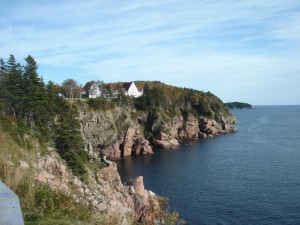 My actual hometown is seventeen miles south of Boston; I have called Stoughton my home since birth, and as a genealogist I can claim a variety of ancestral home towns or villages. Genealogically speaking, however, I feel most at home in Nova Scotia, Canada.
My actual hometown is seventeen miles south of Boston; I have called Stoughton my home since birth, and as a genealogist I can claim a variety of ancestral home towns or villages. Genealogically speaking, however, I feel most at home in Nova Scotia, Canada.
My paternal great-grandfather, James Albert George Lambert of Halifax (1846-1928), was for many years my genealogical brick wall. Back in the 1980s and 1990s I spent countless hours writing letters and going online, but these searches never allowed me to leap over that brick wall. Continue reading Returning to my ancestral home in Nova Scotia
Ships of the Winthrop Migration, 1629-1630
The Massachusetts Bay Company arranged for six vessels to sail for New England in 1629, only five of which reached their destination. The salient details for each of these sailings are summarized below:
George Bonaventure, Thomas Cox, master. She left the Isle of Wight 4 May 1629, and probably reached Salem during the first half of July. Samuel Sharp and the Rev. Samuel Skelton were two of the passengers. Continue reading Ships of the Winthrop Migration, 1629-1630
Voices from the sixteenth and seventeenth centuries
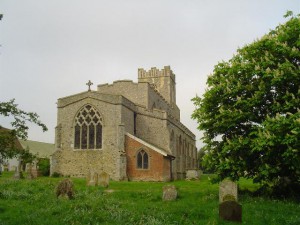
One of my current projects is a new genealogy of the Winthrop family of Suffolk in England and then Massachusetts Bay in New England. I am in the process of reading through the Winthrop Papers, a six-volume collection of documents associated with the family in England and America – including many letters by family members, friends, and associates – during the sixteenth, seventeenth, and eighteenth centuries. Of particular interest in Volume 1 is the diary kept by AdamA Winthrop (1548–1623), the father of Governor John1 Winthrop of Massachusetts Bay. Continue reading Voices from the sixteenth and seventeenth centuries
Object Lessons
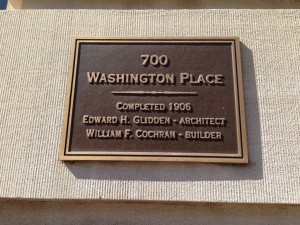 I recently paid a visit to Baltimore to photograph some of the surviving architectural commissions of my great-grandfather Edward Hughes Glidden. I had a great time traversing the city, from Battle Monument Square to Druid Hill Park, from the financial district to South and East Baltimore, and then out to Johns Hopkins’ Homewood campus, Roland Park, and Guilford.
I recently paid a visit to Baltimore to photograph some of the surviving architectural commissions of my great-grandfather Edward Hughes Glidden. I had a great time traversing the city, from Battle Monument Square to Druid Hill Park, from the financial district to South and East Baltimore, and then out to Johns Hopkins’ Homewood campus, Roland Park, and Guilford.
Some of Glidden’s buildings have fallen into disrepair – the Seventh Baptist and Second German Evangelical Churches are sad examples – while others are evidently well cared for and even loved. Best of all, on my first morning in the city I photographed the marker at the entrance to the Washington Apartments (1905–6) on Washington Place, where Glidden and his patron William F. Cochran are still memorialized. Continue reading Object Lessons
What we inherit, or, critical analysis
 The seventy-ninth anniversary of my parents’ marriage falls on 30 March 2014. They were married for 71 years before my mother’s death at age 99 years, 6 months, and 9 days in 2006. Mom was my connection to genealogy. Her mother was the last of her branch of the family and inherited and treasured all of the possessions, lore, and memories that came down to her. They’ve all been passed to me now. Continue reading What we inherit, or, critical analysis
The seventy-ninth anniversary of my parents’ marriage falls on 30 March 2014. They were married for 71 years before my mother’s death at age 99 years, 6 months, and 9 days in 2006. Mom was my connection to genealogy. Her mother was the last of her branch of the family and inherited and treasured all of the possessions, lore, and memories that came down to her. They’ve all been passed to me now. Continue reading What we inherit, or, critical analysis
Progress on Western Massachusetts Families in 1790
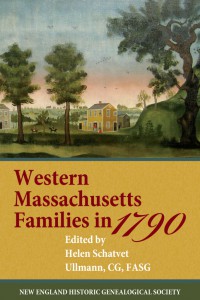 After publication of Western Massachusetts Families in 1790 in book form, the project continues as a database on AmericanAncestors.org and is becoming a more and more useful resource. While there were some 14,171 households listed in Berkshire and Hampshire Counties in 1790, one might think there would be few connections between the almost randomly distributed sketches in the project. But there are. Just the other day, in a sketch of Joseph Brown, I recognized his daughter Freelove’s husband, William Jenks, as a child in the sketch of Edmund Jenks, published online several months ago. And this is not the first time that’s happened. Continue reading Progress on Western Massachusetts Families in 1790
After publication of Western Massachusetts Families in 1790 in book form, the project continues as a database on AmericanAncestors.org and is becoming a more and more useful resource. While there were some 14,171 households listed in Berkshire and Hampshire Counties in 1790, one might think there would be few connections between the almost randomly distributed sketches in the project. But there are. Just the other day, in a sketch of Joseph Brown, I recognized his daughter Freelove’s husband, William Jenks, as a child in the sketch of Edmund Jenks, published online several months ago. And this is not the first time that’s happened. Continue reading Progress on Western Massachusetts Families in 1790
The Indian and African-American populations of Stoughton
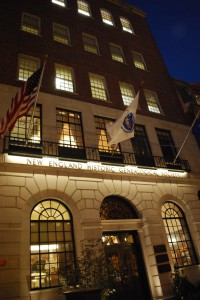 David Allen Lambert and Jennifer Pustz will speak at NEHGS on Wednesday, March 26, on “Uncovering African American Stories.”
David Allen Lambert and Jennifer Pustz will speak at NEHGS on Wednesday, March 26, on “Uncovering African American Stories.”
As a community historian for Stoughton, Massachusetts, I have studied all local families from the early eighteenth to the early twentieth centuries. Within Stoughton there was a population of Native Americans placed into the Praying Indian village of Punkapoag through the efforts of the Rev. John Eliot in 1657. As the Tribal Historian of the Massachuset-Punkapoag Indians, I have also spent many years researching the members of that community. Continue reading The Indian and African-American populations of Stoughton
